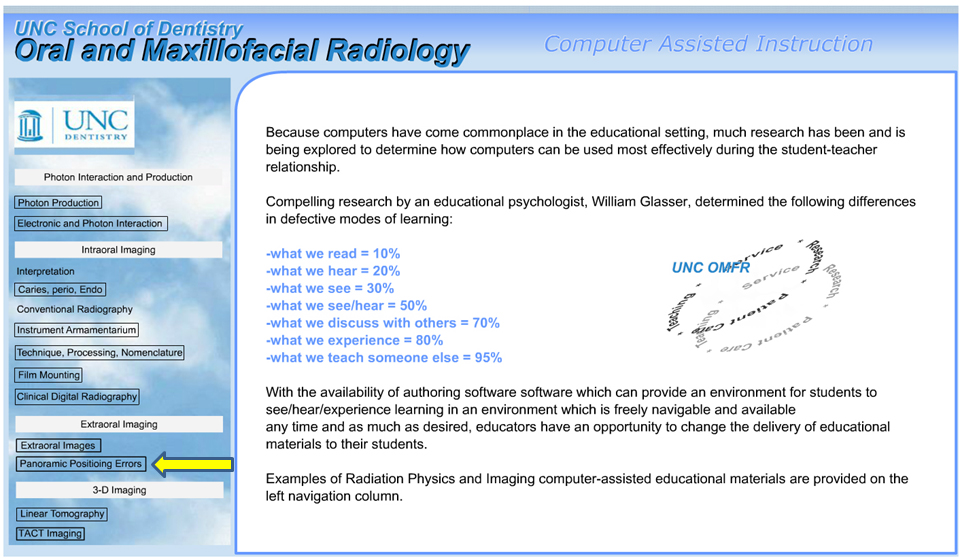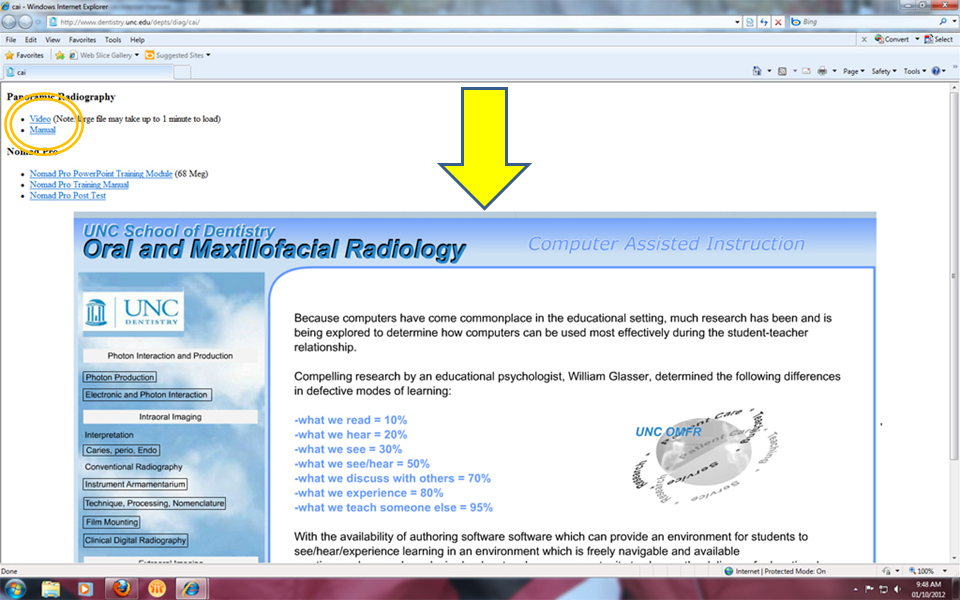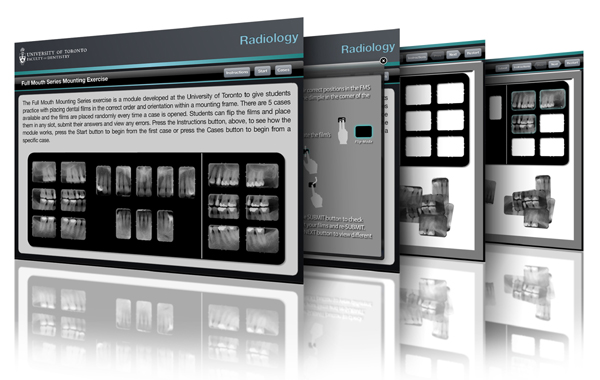I recently found an app that shows good examples of pantomograph positioning as well as errors in positioning. Before I get to that I’d like to address some issues some people have been running into trying to view the University of North Carolina website on pantomograph positioning. Several people have asked what the password is for the site and I was stumped because I’ve always been able to view the site no problem. Well, I figured out when it asks for a password and it has to do with which link you select. Below is a screen shot of the page when opening. Some people are not seeing the blue box at the bottom (big yellow arrow) and only seeing the links on the top left corner (orange circles).
If you select the links in the orange circles it will ask for a password. You must be able to see the blue box and select the panoramic positioning errors (yellow arrow) to view the animations.
 If you are not seeing this blue box when the page opens it is because it requires flash to work meaning it won’t work on any Apple products (iPhone, iPad, etc.)
If you are not seeing this blue box when the page opens it is because it requires flash to work meaning it won’t work on any Apple products (iPhone, iPad, etc.)
So to help out with that and also provide another option for learning/understanding pantomograph positioning errors I have found an app that is easy to use and bonus it’s FREE. It was created by Georgia Health Sciences University College of Dental Medicine. It has a written and video demonstrations showing each error and how it occurs. I haven’t quite figured out how to add a link for apps just yet, but all you need to do is a search for ‘dentistry pro consult’ and you should be able to find it just fine.
Please let me know what you think of it (remember it’s just a starting app the school has created, but it’s a really good start). Also, if you are aware of any oral radiology apps (Apple or Android) send them my way so that I can check them out and evaluate.
Thanks and enjoy!


got to see the flash. cool. better illustration
Dr. G. good thing i found your website. my colleague is insisting that with a panoramic xray she will be able to tell it a tooth( particularly the lower third molars if impacted) is facing buccally or lingually. Please enlighten me. i thought one cannot tell unless you get a periapical with slob technique. i would appreciate any reference that you can share. Thank you
I would agree that a minimum of two 2D images (periapical radiographs) would be necessary to determine which way a tooth is impacted or a CBCT would help. The only reference I can think of is the White and Pharoah book as I think it covers a little of that. However you bring up a good point for a future post that I may look into to help. Thanks.